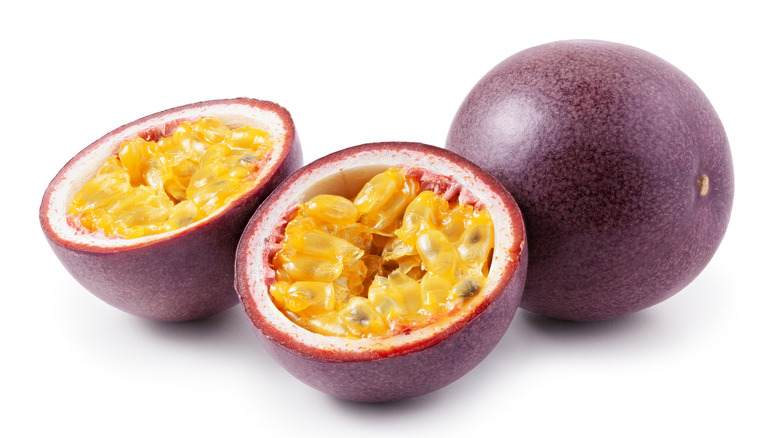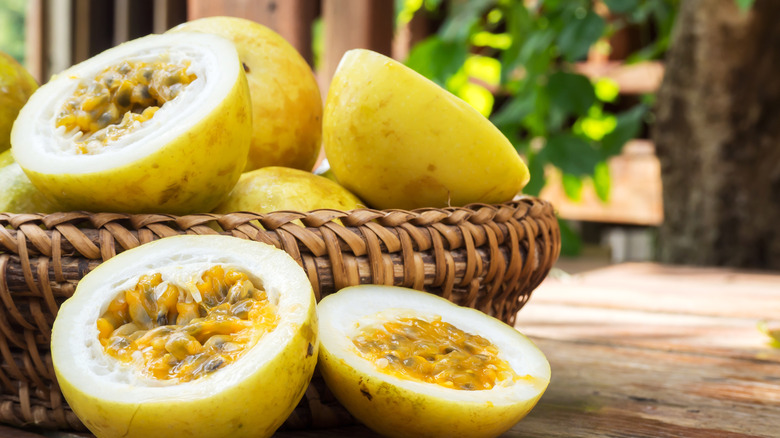How Many Types Of Passion Fruit Are There?
For many of us, our knowledge about the typically sweet and succulent passion fruit only extends to the fact that it's a tropical fruit and can be found in the produce section of most grocery stores. However, there is far more to the passion fruit than meets the eye.
According to Healthline, passion fruit is particularly popular among the health-conscious crowd, as it's an excellent source of fiber and antioxidants. Passion fruit also packs a healthy dose of vitamins A and C, as well as potassium and iron. Furthermore, as noted by Medical News Today, passion fruit helps support your immune system, heart health, and insulin sensitivity.
While it's simple to picture passion fruit as a fist-sized red berry with a jelly-like interior, there are actually several different types of passion fruit. Because each variety has been selectively bred to enhance specific traits, each has its own unique flavors, colors, and uses.
Passion fruit comes in many varieties
Although more than 400 different varieties of passion fruit are grown worldwide, per Specialty Produce, there are four key players in the passion fruit game. These main four are the purple, yellow, sweet, and giant varieties.
The purple passion fruit is the most common of the four, according to Home Stratosphere. It packs the most nutrients, has a tangy flavor, and is less acidic than other varieties. This is the type of passion fruit you're most likely to see at the grocery store. Yellow passion fruit, Maracuya being one particular type, is sweeter and more acidic, making it ideal for juices, jams and jellies, syrups, and desserts.
Sweet passion fruits are touted by many as being the best tasting. This variety is also particularly notable for its color, as it is blue until it ripens into a shade of orange (via Asian Recipe). Last but not least, the giant passion fruit is great for juicing, although its flavor tends to be weaker than the smaller varieties.

